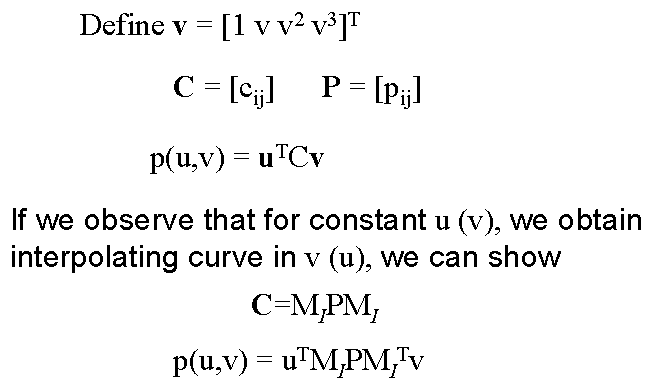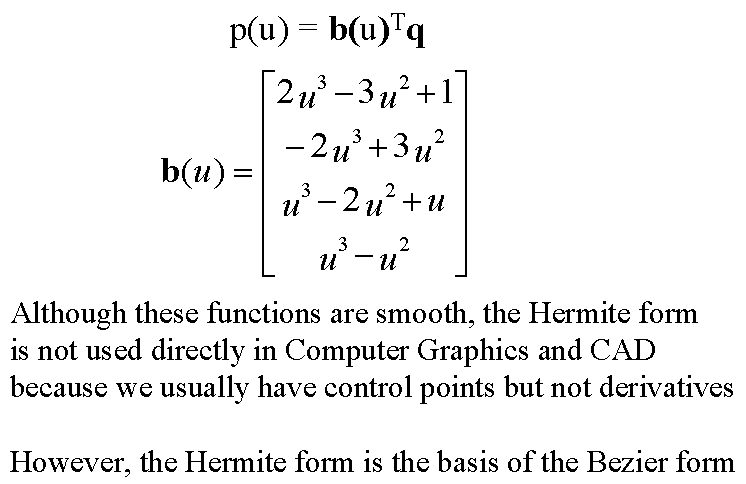CHAPTER 12 - Parametric Cubic Curves
- Introduce the types of curves
- Interpolating
- Hermite
- Bezier
- B-spline
- Analyze their performance
Matrix-Vector Form

Interpolating Curve

Interpolation Equations

Interpolation Matrix

Interpolating Multiple Segments

Blending Functions

Blending Functions

Interpolating a Patch

Matrix Form

Blending Patches
Other Types of Curves and Surfaces
- How can we get around the limitations of the
interpolating form
- Lack of smoothness
- Discontinuous derivatives at join points
- We have four conditions (for cubics) that we
can apply to each segment
- Use them other than for interpolation
- Need only come close to the data
Hermite Form
Equations

Matrix Form

Blending Polynomials
Parametric and Geometric Continuity
- We can require the derivatives of x, y,and z to each be continuous at join points (parametric continuity)
- Alternately, we can only require that the tangents of the resulting curve be continuous (geometry continuity)
- The latter gives more flexibility as we have need satisfy only two conditions rather than three at each join point
Example

Higher Dimensional Approximations
- The techniques for both interpolating and Hermite curves can be used with higher dimensional parametric polynomials
- For interpolating form, the resulting matrix becomes increasingly more ill-conditioned and the resulting curves less smooth and more prone to numerical errors
- In both cases, there is more work in rendering the resulting polynomial curves and surfaces




